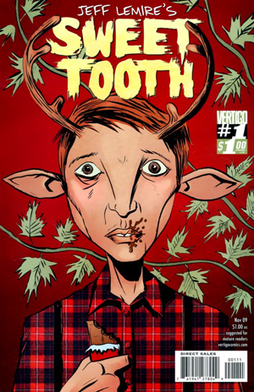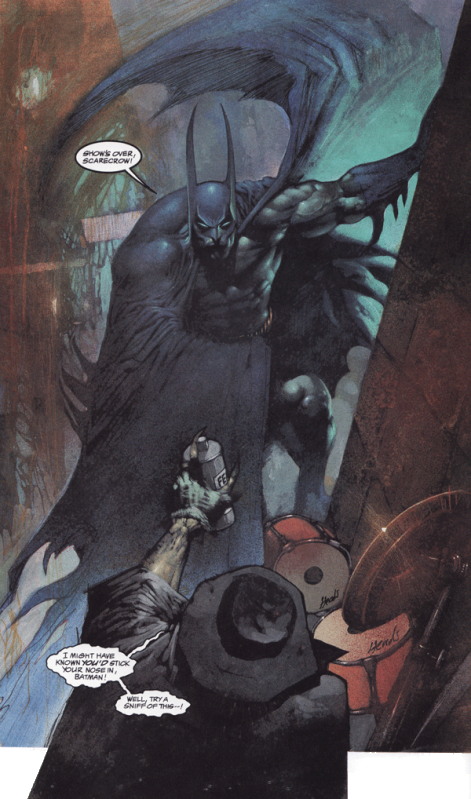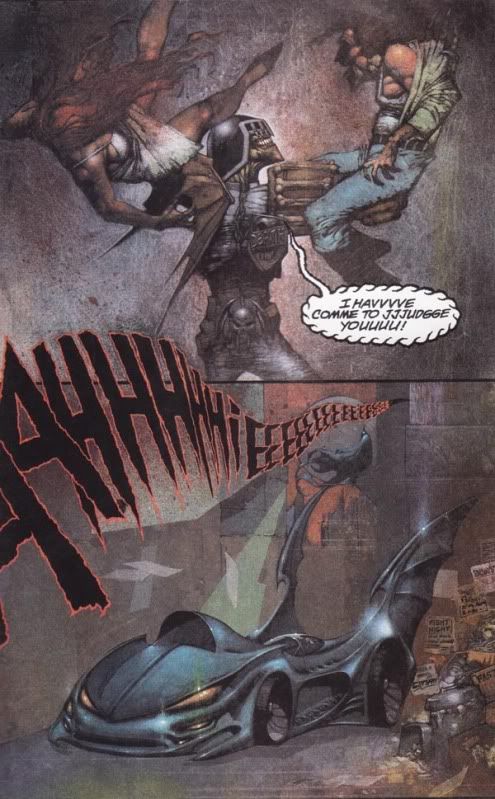First, let me the 45thousandth person to proclaim Essex County a masterwork. I just sat down and reread volume one then followed it immediately with volumes two and three. And I don't know if it's possible for me to overstate how excellent this work is. It's on par with the very best comics I know --- Jimmy Corrigan, Maus, Blankets --- it's high literature as Lemire's fellow Canadians have recognized.
What I don't know is whether or not Lemire is a bonafide genius. It's just too soon to say. Chris "Jimmy Corrigan" Ware is. Craig "Blankets" Thompson? Let's wait for the next book before we decide.
(Incidentally, speaking of Thompson, as his drawings in Blankets are what I wish I could draw, the style I wish I had, Essex's drawings are what I would actually draw. If, you know, I had a decent sense of perspective and the human figure.)
But whether he is a genius who can consistently hit the heights represented by Essex County or not doesn't affect at all the inherent worth of Essex County itself.
I admit I have a couple biases that help my opinion of him, viz:
1. Half my childhood was spent in the Idaho version or southern Ontario and I feel the honesty in his portrayal. It's clear he respects his past.
2. The drawing thing. But seriously. That ink....
See that crow? I have a thing for crows (add bias #3), but in the end, that crow is not just a crow. It is a symbol that helps tie all three books together into a single novel. I don't know whether Lemire planned it that way or not, but I've seen enough crappy pulltogether symboljobs to recognize the difference between a hack bit of lookatme and a genuine, brilliant metaphor.
For those waiting for some plot summary, Essex County is three stories about a pair of Essex County families. That good enough for you?
After my last post I want to mention briefly that all three stories contain or grow out of a single, pivotal, life-shaping sexual encounter. Nothing base or sexy here, just a simple fact: the power to create life does just that --- and not only directly, through conception.
I could wax rhapsodic about all three volumes, but I have another couple Lemire books to get to, and so just one more thing, about the first volume, Tales from the Farm. As I said in my introductory essay here, serious comics are in a transitional state --- they often require a bit of meta --- and Farm is no exception. The main character, a boy named Lester, wears a cape and mask, draws his own superhero comics. This is all done to terrific effect, but once again, it's a serious artist acknowledging comics' hackneyed past. (Not that I have anything against superheros, but they're just one small corner of all possible stories.)
I don't suppose it's possible to arrive at adulthood making comics without a relationship with superheros though. Love them, hate them, love/hate them, you know them.
And so, although I was surprised to learn that Lemire is writing Superboy and Atom, I wasn't shocked.
I found out by looking for more information on Sweet Tooth, the comic he's writing and drawing for Vertigo, DC's grownup house.
It's one of a zillion postapocalyptic stories out now, but a good one. I've read the first two collections and I'm hoping to read more. It's too soon to know whether or not it is evidence of Lemire's possible genius, but not to soon to know that it's good. It gets compared to Y: The Last Man and The Walking Dead and those comparisons seem apt. In this case we have a disease that's killed nearly everyone, weird mutated children, evidence of genetic science being the cause, a big man with guns who kills people, desperation, prostitutes, children in peril --- all that stuff. But its well written and drawn in a gussied up version of his Essex tales and certainly has the potential to be something special. I hope so. I'm expecting great things from this Lemire guy. Time to pick up some more books.
A Month of Wednesdays: March 2024
1 week ago






